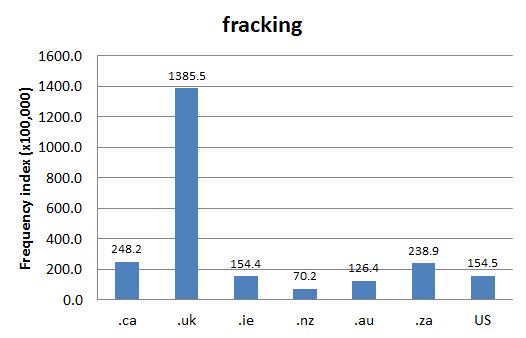DCHP-2
fracking fracing DCHP-2 (July 2016)
Non-Canadianism
n. — Mining
a method for extracting oil or gas. Also known as hydraulic fracturing.
This method of drilling was developed in the 1940s in the US, and is now quite common wherever gas or oil is found. See Chart 1.- Because of the importance of mining and oil extraction in some parts of the country, hypotheses existed that the term might be Canadian. It is not by virtue of our definition (Dollinger 2015c)
References:
Images:
Chart 1: Internet Domain Search, 17 Jan. 2014
